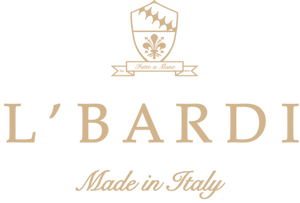"Entrusted to the hands of the antique finisher, the upper part of the shoe becomes a work of art". The technique used to achieve this work of art is known as 'Anticatura'. Anticatura is Italian for antique finishing, it is a speciality of Italian and French master shoemakers, famous makers such as Berluti, Santoni, Corthay and Bontoni. Calzoleria L'bardi is relatively new amongst the fine Italian shoemakers, but our quality and craftsmanship is on par with those that are considered the finest shoemakers in the world. We are currently working on a Limited Edition collection of hand welted men's footwear, using the finest construction techniques usually only found in bespoke footwear, this will further solidify our position as one of the finest shoemakers in the world. Our limited edition collection, will feature the Anticatura technique, something we already provide on our sneaker range.
The Anticatura technique is a hand dyeing process of leather, it creates a unique patina with an aged effect. The process starts with unfinished crust leather, leather that has been tanned and treated, but not dyed. We then apply the dyes by hand in our Laboratorio (Workshop) to a combination of the uncut hide and the finished/fully assembled shoe, using a combination of white cloths, brushes and sometimes sponges, to create a unique look on each and every pair.
The technique involves applying many layers of colour to the leather to build up the patina until the desired look is achieved. The process starts with a minimum of one or two stages involving different dyes, applying up to seven or eight dyes for an even greater depth of colour that can only be found in hand coloured shoes. Sometimes multiple colours are used to achieve a patina with many different hues, in which multiple cloths and brushes are needed, because each dye requires its own cloth and brush, so as to avoid destroying the desired effect. The Anticatura technique allows the Antique finisher to highlight not only certain parts of the grain, but also particular parts of the shoe, often the toe cap, the heel counter and the eyelets, from the throat line (the base of the laces) up to the top of the tongue. The process gives the leather volume, created by the contrasting light and shadow of the grain. The process is reminiscent of the 'Chiaroscuro' technique in fine art, which describes the dramatic effect of contrasting areas of light and dark.

Unlike painting on a canvas, leather is a living and unpredictable material. Every shoe is a story unto itself, each piece of leather different from the next, even if it comes from the same hide, its various points absorb the dye differently. In order to stabilise the dyes and ensure the colour remains fixed, tiny irons, made specially for the task, are rubbed over the shoe, the high temperature blocks the pores of the leather and the dyes are then fixed by creams and polishes made from beeswax.

It takes passion, talent and consistency to become an expert in Anticatura. The goal of an expert antique finisher is to make a pair of shoes appear identical to the others in the size range of the collection, from the smallest size all the way up to the larges. However no pair is exactly the same, as each antique finisher puts their own interpretation on the desired effect, this is the appeal of producing shoes that are technically perfect, but at the same time uniques pieces, they are truly works of art. L'bardi will be using the Anticatura technique more and more in each one of our collections, so stay tuned!

Much like our shoes, the floor of our workshop is a work of art in itself, years of spilled dye have created a colourful masterpiece


